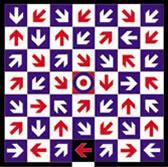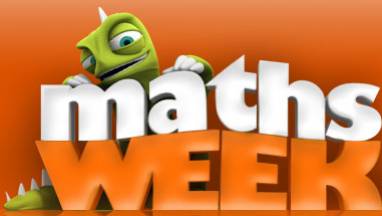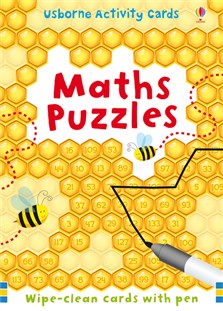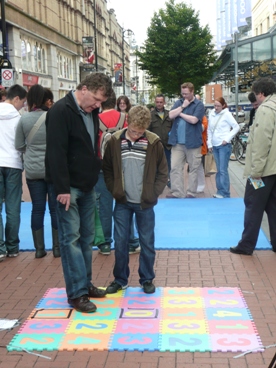 Maths Week Ireland 2012 will take place from 13th October – 21 October. Powerstown Educate Together National School are participating! We have organised numerous math activities for the children to participate in over the coming week, including puzzles, quizes, trails and much much more!
Maths Week Ireland 2012 will take place from 13th October – 21 October. Powerstown Educate Together National School are participating! We have organised numerous math activities for the children to participate in over the coming week, including puzzles, quizes, trails and much much more!
Thursday, October 18th will be MATHS DAY! The day will start with MATHS FOR FUN! All parents, guardians and friends are invited to come into thier child’s class and participate in some simple, fun maths games from 8.30 am – 9am.
Maths Week Ireland is an all-Ireland celebration of Maths and is a partnership of over 50 universities, institutes of technology, colleges, museums, libraries, visitors centres, professional bodies – any group that values maths.
Maths Week Ireland promotes, awareness, appreciation and understanding of maths through a huge variety of events and activities.
Maths Puzzles
Here are some fun maths Puzzle links that you can use at home:
Create your own Puzzle Day by using the resources below:
Puzzle.com is a fantastic website full of great puzzles. All puzzles come with clear solutions.
www.puzzles.com/
Venture into the world of Puzzleland created by Sam Loyd
There is an enchanted place where every sign is a puzzle, every question a riddle….
http://www.samloyd.com/puzzleland/
Find out more about one of the great puzzlers of all time www.samuelloyd.com/
Another puzzler is Henry Dudeney and you can find links to his puzzles at http://en.wikipedia.org/wiki/Henry_Dudeney
Martin Gardner
Martin Gardner was an American popular mathematics and science writer specializing in recreational mathematics. read more from wikipedia and some puzzles by Martin can be found here: http://www.puzzles.com/puzzleplayground/Authors/MartinGardner.htm
On and around the 21st October each year there is a worldwide celebration of Martin Gardner and his legacy. See website – http://www.g4g-com.org/
Nrich website has a range of good puzzles and mathematical challenges for students of all ages http//nrich.maths.org/public/search.php?search=puzzles
Primary Mathematics Challenge papers from 2008 to 2012 with answers are free to download. These questions make a good source of puzzle challenge questions for team games.
www.m-a.org.uk/jsp/index.jsp?lnk=251
The FunMaths Roadshow is a collection of 350 mathematical activities suitable for use with school pupils between the ages of 5 and 20. It is an excellent instant resource when creating at Maths Puzzle Day. Costs 40 Euros including P&P
www.maths.liv.ac.uk/lms/funmaths/
Centre for Innovation in Mathematics Teaching has over 100 competitions puzzle challenges with answers ready to be cut out and used
www.cimt.plymouth.ac.uk/resources/puzzles/default.htm
Maths Mazes
 A maze is great fun and it can be a maths learning experience too!
A maze is great fun and it can be a maths learning experience too!
Mazes offer open ended problem solving for all ages in an imaginative and creative environment. They develop mathematical logic skills and also require students to memorise quite lengthy sequences of moves in a particular order.
There are a great range of mathematical mazes. The maze designer Adrian Fisher has created a set of interesting logic mazes called “6 minute mazes” For more information visit
www.adrianfisherdesign.com/live_site/index.php?option=com_content&view=article&id=53&Itemid=68
On the streets during Maths Week Ireland we have used these 6 minute mazes
The Jumping Maze
 How to play
How to play
Start at the black square with the “1” on it in the centre of the bottom row, and jump forward, sideways, or backwards, but never diagonally, the number of squares indicated by the number on the square. The objective is to find your way to the central square.
It is not as easy as it looks.
(c) 1999, Adrian Fisher
Archery Maze
 How to play
How to play
Starting at the arrow in the black square, find your way to the central target. Move any distance in the direction indicated. Whenever you stop, change direction as indicated by the arrow on whichyou land.
Note this is a very difficult maze as there are 20 moves in the correct path!
(c) 1999, Adrian Fisher
No Left Turn Maze
These mazes only allow right turns. (You are not allowed to turn around fully or go backwards). Here is one example and solution (below).
Of course you can also make no right turn mazes.

Solution:

These mazes may be made in chalk in the playground or by many other ways. It could for instance be made with square bales of straw.
How to design a logic maze

Choose an entry point to the maze which must be on the edge of the maze. Then choose a final destination square and draw a main path, or solution route, from this square to the entry point in the maze. For example, when creating your own Jumping Maze you would need to work backwards from the centre square like this:
The solution route created is 1, 1, 3, 3, 2, 2, X
To complete this maze simply put other numbers into the blank squares on the grid. The level of complexity of the final maze depends on the position of the numbers on the grid.
Most of the mazes that your students create will have a number of different solution routes to the final destination square. To create a unique solution path (only one way to the final destination square), none of the other numbers placed on the grid should allow you to “jump” onto the solution route. This offers a difficult yet very motivational challenge to students.
Make sure when creating a maze that the path is not too short or your maze will be solved very quickly. Alternatively don’t make the path too long, as you won’t be able to have many choices or dead-ends, and then the maze becomes less of a challenge. Think carefully about the design and the way the maze looks; this will be important when it comes to getting others interested in playing your maze.
Here are some logic mazes you can show students before they start to design their own mazes. To motivate students it is a good idea to chalk mazes on the playground or to mark them out with tape in the school hall.
No Left Turn Mazes
www.logicmazes.com/easy/maze1.html
Eyeball Shape Mazes
www.logicmazes.com/eyeball.html
Alice and Arrow Mazes
Number Mazes
Rolling Block Mazes
www.logicmazes.com/rb/column.html
More ideas on designing a maze
http://gwydir.demon.co.uk/jo/maze/design/index.htm
Books on Mazes
The Amazing Book of Mazes by Adrian Fisher
Adrian Fisher is without question the worlds leading maze designer, and here presents a comprehensive, fascinating and fun account of the history of the maze that has an equally strong interactive element. This stunning volume will delight mass audiences everywhere.
Mathematics Galore! by Christopher Budd and Christopher Sangwin, Published by Oxford University Press
The book has a chapter on Mazes. Other chapters are on the maths of folk dancing, sundials, magic, castles, codes, number systems, and slide rules.
Problem Solving through Recreational Mathematics by Averbach and Chei. Published by Dover
Understanding the maths involved in mazes – Networks and Graph Theory – can get complex. If you wish to teach students some of this maths this book has accessible examples and exercises for 10 to 16 year olds. Its also has some really nice puzzles and problems.




No responses yet